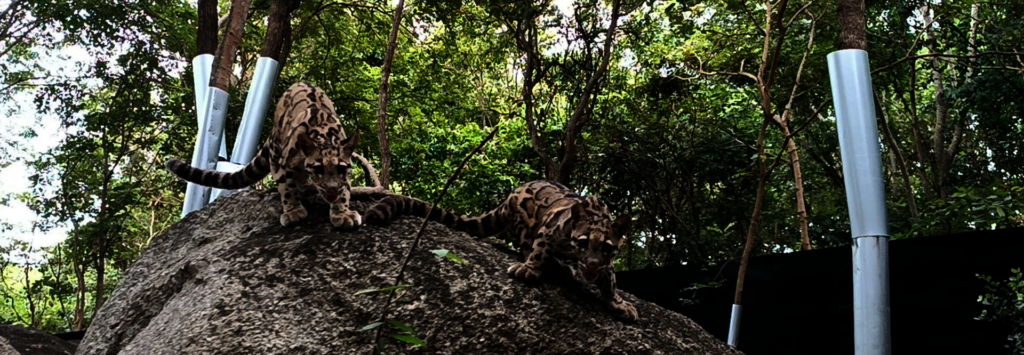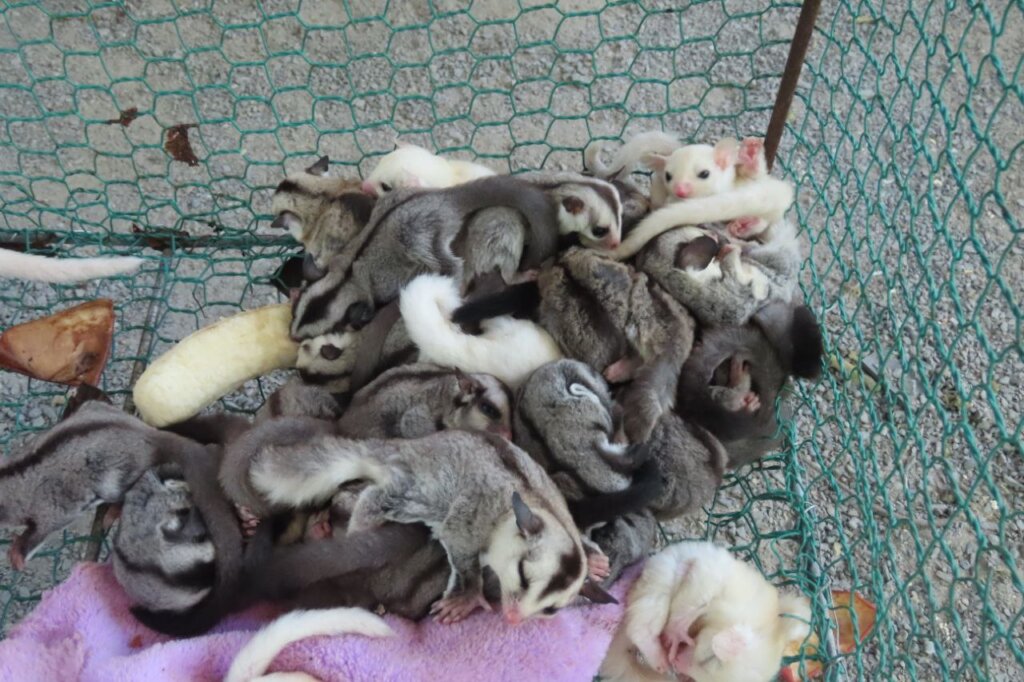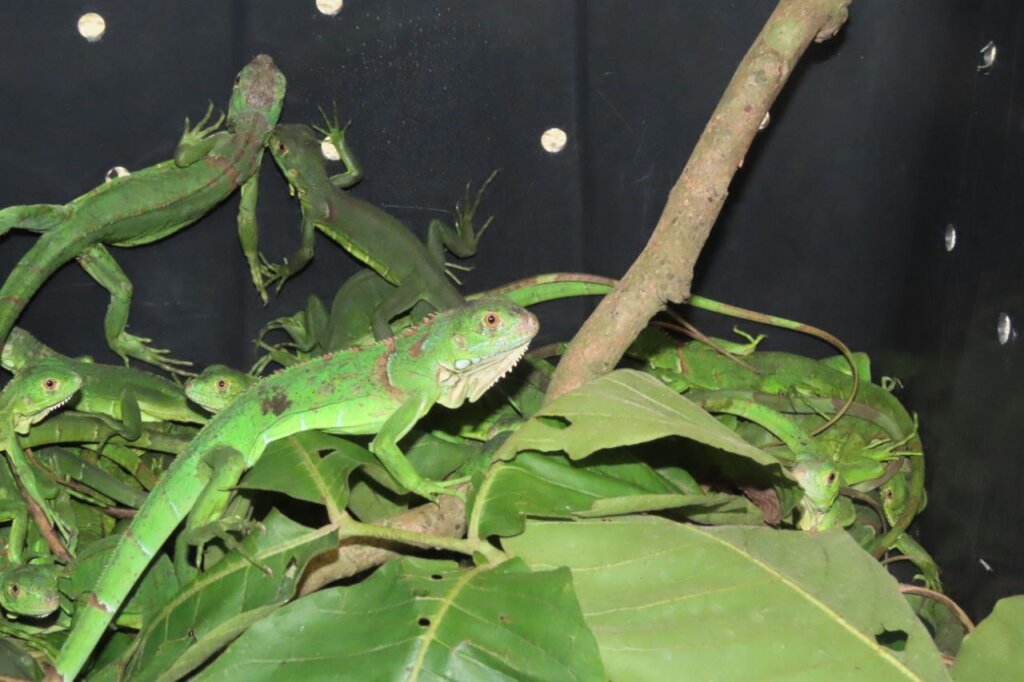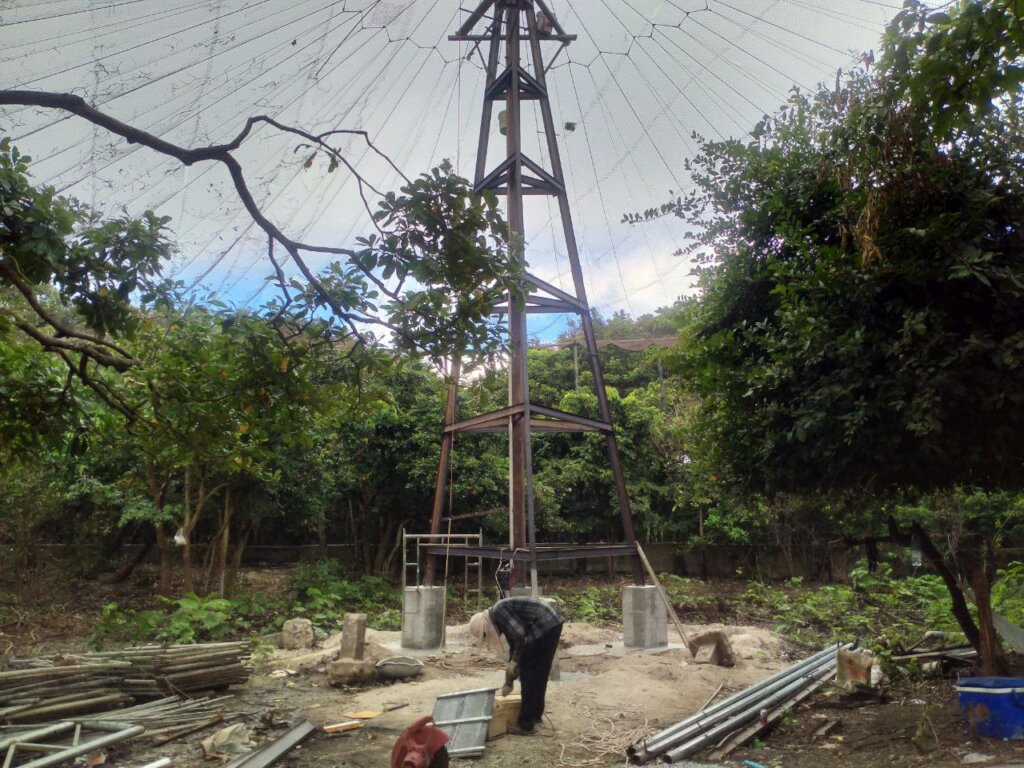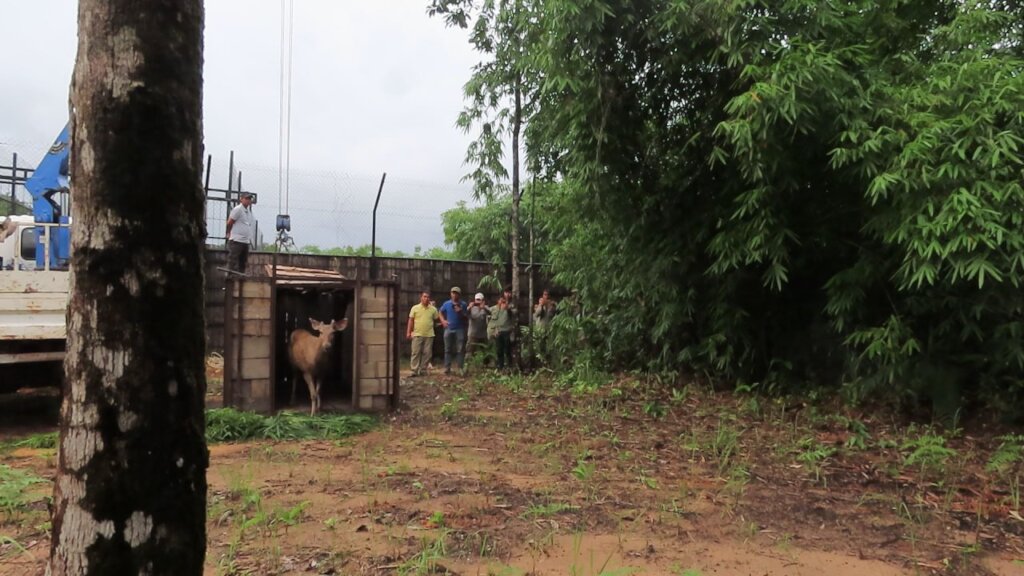By Nick Marx | Director, Wildlife Rescue, Care and Release
More animals arrived at Phnom Tamao Wildlife Rescue Centre during the third quarter than in other recent quarters. A total of 541 animals arrived from July-September, of which 352 were from non-native species. All but one of these non-natives came from an interception by local Military Police in Prey Veng Province of a minivan trafficking a large shipment of live exotic wildlife from Thailand to Vietnam. The shipment included baby green iguanas, baby sugar gliders and different species of squirrels, red-whiskered bulbuls, sulcata tortoises, sun conures, meerkats, palm and salmon-crested cockatoos and blue-and-gold macaws. This is tragic as they were likely trafficked long distances under terrible conditions and the Centre is not equipped to cater to the specialized needs of numerous non-native species, ensuring that many would not survive.
Arriving native species numbered 189 individuals, including 92 pythons, 9 rat snakes, 15 long-tailed and 10 pig-tailed macaques, 16 turtles and tortoises, 3 common palm civets, 3 pangolins, 2 pygmy and 1 northern slow loris, 2 binturongs, 1 leopard cat, 1 golden jackal, 1 lesser mouse-deer, 1 pileated gibbon and 29 birds including lesser adjutants, brown fish owls, eagles, an Oriental pied hornbill and a green peafowl. In addition, 15 animals were born at PTWRC this quarter including: 4 sambar deer, 3 red muntjac, 3 common palm civets, 2 pileated gibbons, 2 wild pigs, and 1 Sunda pangolin.
164 animals were released between July and September. These included 9 rat snakes, released into the Phnom Tamao Forest, and 92 pythons released elsewhere. 32 long-tailed macaques were taken for release in Aural. 4 sambar deer were transported to a site in Koh Kong that is being protected by Wildlife Alliance, for release at a later date. 2 common palm civets, 15 tortoises, 2 East Asian porcupines and 8 birds escaped. Escapees we count as releases and this is not a problem at Phnom Tamao, as we are protecting the area and continue to put food down for released and escaped animals for as long as it is required.
In May, I reported the rescue of 2 female clouded leopard cubs by rangers from Trapeang Roung patrol station in Koh Kong. The cubs were extremely young when we received them and it is a credit to our Nursery keepers that they have had no problems at all during their early days. In September, the young ones were transferred to their large, roofless enclosure on a permanent basis. Cloudies are excellent climbers and we placed sheet metal around all the trees inside the enclosure to prevent escape, which seems a shame, but is no great problem as the cubs enjoy a much larger area than if the cage had a roof and the enclosure holds a small outcrop of rocks on which the cats can climb and play. The future: male clouded leopards can present dangers to females and there are necessary techniques to pairing this species. I am currently asking around various facilities on different continents that breed cloudies to find out if they can spare any very young males to pair with our two girls.
Male elephant, Chhouk, who lost the lower part of his left front leg to a snare when he was a tiny calf, continues to feature in the news. The lesions to the bottom of his stump were at last getting better following many months of treatment. Female elephant Lucky, who I should add is not always as sweet and cuddly as most people think, was being allowed to share his enclosure once again. She hit Chhouk, knocking him into his pool and hurting him quite badly. Initially Chhouk could hardly walk and injections given by Forestry Administration vets did little to help. On the advice of Wildlife Alliance vets, I purchased Ibuprofen to reduce pain and inflammation, which we managed to trick Chhouk into taking by hiding in bread. Chhouk quickly resumed feeding and within hours was clearly feeling much better. Unfortunately, the bruising to his ‘good’ right side has meant he uses his damaged left leg more, which has once again worsened the lesions to his stump.
Perhaps it is not a subject as attractive as the animals we rescue and care for, but recent construction at the Rescue Centre has been critical and is something we can be very pleased about. The new clouded leopard enclosure has been an instant success with its occupants, which is really all that matters. Following completion of the much-needed water filtration plant, featured in our August report, medical care required to treat gut disorders, particularly for primates, instantly reduced – a clear indication of how necessary this was.
Phnom Tamao’s huge water bird aviary, constructed many years ago has been repaired or renewed several times over the intervening two decades. It had once again fallen into disrepair and the Forestry Administration had decided to scrap it. Although perhaps not an architectural icon, this large circular enclosure is perhaps the best bird cage I have seen, enabling large water birds to forage, fly and successfully nest and raise young. It seemed a shame to scrap the cage and I requested permission to reroof and repair the damaged parts. Our excellent constructor has completed the task and the aviary once again holds water birds, with 3 lesser adjutant storks rescued as chicks and 2 black necked storks we bred at Phnom Tamao, being the first new occupants.
Not yet complete, but perhaps of greater significance is the construction of the fence to demarcate and protect the whole area that comprises Phnom Tamao, which was designated as officially protected by Royal Decree in August 2022. A fence is needed because our rangers routinely find snares in the forest and incidents of rifle hunting have occurred recently, along with vehicles driving in the forest at night. Construction of the boundary fence started in May 2023, only to stop after the completion of around 6 kilometers because the Foresty Administration insisted the fence run between the standing forest and the area that was cleared in 2022, now called the Botanical Garden. Our concerns were resolved in September, when the Chief Minister for the Ministry of Agriculture, Foresty and Fisheries decided that both the boundary fence and the intervening fence could be built concurrently. Construction has now resumed, with the fence between the two zones being built with different specifications as it is an ‘extra’ and was therefore not budgeted for. This should also prevent it being mistakenly identified as a boundary fence.
Along with the fence comes the need for improved security and the construction of patrol stations from which our rangers can monitor and regulate the entry gates set within the fence. So far three stations are planned and one has already been completed. With this in mind and the recent improvements made to forest patrols, the future is looking brighter for Phnom Tamao, the forest and its resident wildlife.
Support from GlobalGiving donors like you enables us to keep caring for all the newly rescued animals and permanent residents at Phnom Tamao, routinely patrol the forest, and execute special projects like these which are vital to our animals’ health and wellbeing. Thank you so much for your support!
Project reports on GlobalGiving are posted directly to globalgiving.org by Project Leaders as they are completed, generally every 3-4 months. To protect the integrity of these documents, GlobalGiving does not alter them; therefore you may find some language or formatting issues.
If you donate to this project or have donated to this project, you can receive an email when this project posts a report. You can also subscribe for reports without donating.
Support this important cause by creating a personalized fundraising page.
Start a Fundraiser